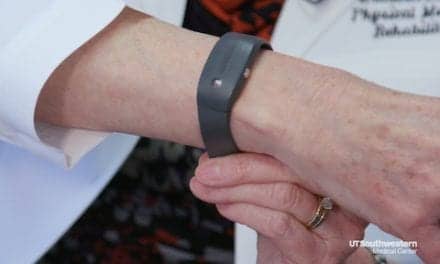A study to be presented at presented at the American Academy of Neurology’s (AAN) 70th Annual Meeting assesses the accuracy of the sleep monitoring technology in the Quell transcutaneous electrical nerve stimulation device by compared to gold standard polysomnography. AAN will take place in Los Angeles, April 21 to 27, 2018.
The pilot study, called “Pilot Study of Sleep/Wake Classification by Leg-Worn Actigraphy,” found the actigraphy performance of the leg-based Quell device to be similar to published data for most wrist-based actigraphy.
The study is supported by NeuroMetrix Inc (makers of Quell) and conducted in collaboration with John Winkelman, MD, PhD, of the Massachusetts General Hospital in Boston.
“Most people with chronic pain have deficient sleep. Quell monitors the user’s sleep to provide objective feedback on this important outcome and to automatically adjust stimulation to optimize comfort and pain relief. This study evaluated the accuracy of the monitoring technology in patients with sleep disorders,” says Shai N. Gozani, MD, PhD, president and CEO of NeuroMetrix, in a release. “We are pleased with the results and have identified several opportunities for improvement.” The study found that applying Cole-Kripke averaging and rescoring increased ROC [receiver operarating characteristic] and specificity without adversely impacting accuracy or sensitivity. The abstract states, “It is possible that performance may be improved further by adjusting the activity threshold.”





I now wear my quell every night without fail, as while I’ve often been able to overlook or ignore pain I might have during the day, the nights have been another thing entirely. I use to dread the arrival of dusk and the thought of facing yet another sleepless night, but my quell has changed all of that for me. I now sleep soundly, and rarely wake before morning. And should I wake with some discomfit I simply use the free app to increase the intensity slightly. For me the quell has been a life changer and something I plan to never be without. Barry